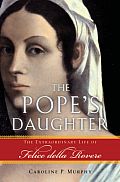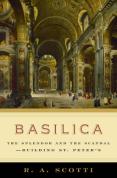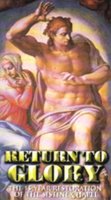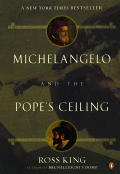 Everyone at the IDC is talking about Caroline Murphy’s book, The Pope’s Daughter: The Extraordinary Life of Felice Della Rovere.
Everyone at the IDC is talking about Caroline Murphy’s book, The Pope’s Daughter: The Extraordinary Life of Felice Della Rovere. The book chronicles the life of Felice, daugher of Pope Julius II who reigned from 1503-1513. Felice began her life as the illegitimate daughter of Pope-to-be Giuliano della Rovere and a Roman noblewoman, Lucrezia Normanni, in 1483. When Felice was 20 years old, her father was elected to the Papal throne and became Rome’s most powerful Renaissance Pope and an exemplary patron of art. In his decade-long reign, he hired Michelangelo to paint the Sistine Chapel Ceiling, asked Rapahel to paint his private apartments in the Vatican Palace, and commissioned Bramante to design the new St. Peter’s Basilica.
Julius was a formidable man, known for his terribilita, and his daughter Felice inherited much of his political-savvy and determination. Her Papal father married her to a Roman noble of the Orsini family, insuring her an aristocratic standing in Roman society, and she used her status to better her own position in the world and that of her father. As Pope, her father regularly called upon her to negotiate diplomatic agreements about issues that could not properly receive direct Papal attention. And concern with her family legacy led Felice to build a financial empire of her own, making her among the richest and most powerful women on the Italian peninsula.
Not suprisingly, Felice moved in the privileged circles of Italian society, and her biography is a star-studded one, showcasing her interactions with such individuals as Michelangelo, Isabella d’Este, Lucrezia Borgia, and Catherine de Medici.
Besides giving a fascinating account of the life of Felice della Rovere, Murphy’s book demonstrates the extreme creativity of the period in which she lived. Surrounded by humanistic invention of every type - artistic, literary, philosophical, and scientific - Felice took the task of self-fashioning to new heights, gaining levels of power and freedom that were extraordinary for a Renaissance woman.
Labels: biography, popes, renaissance
























